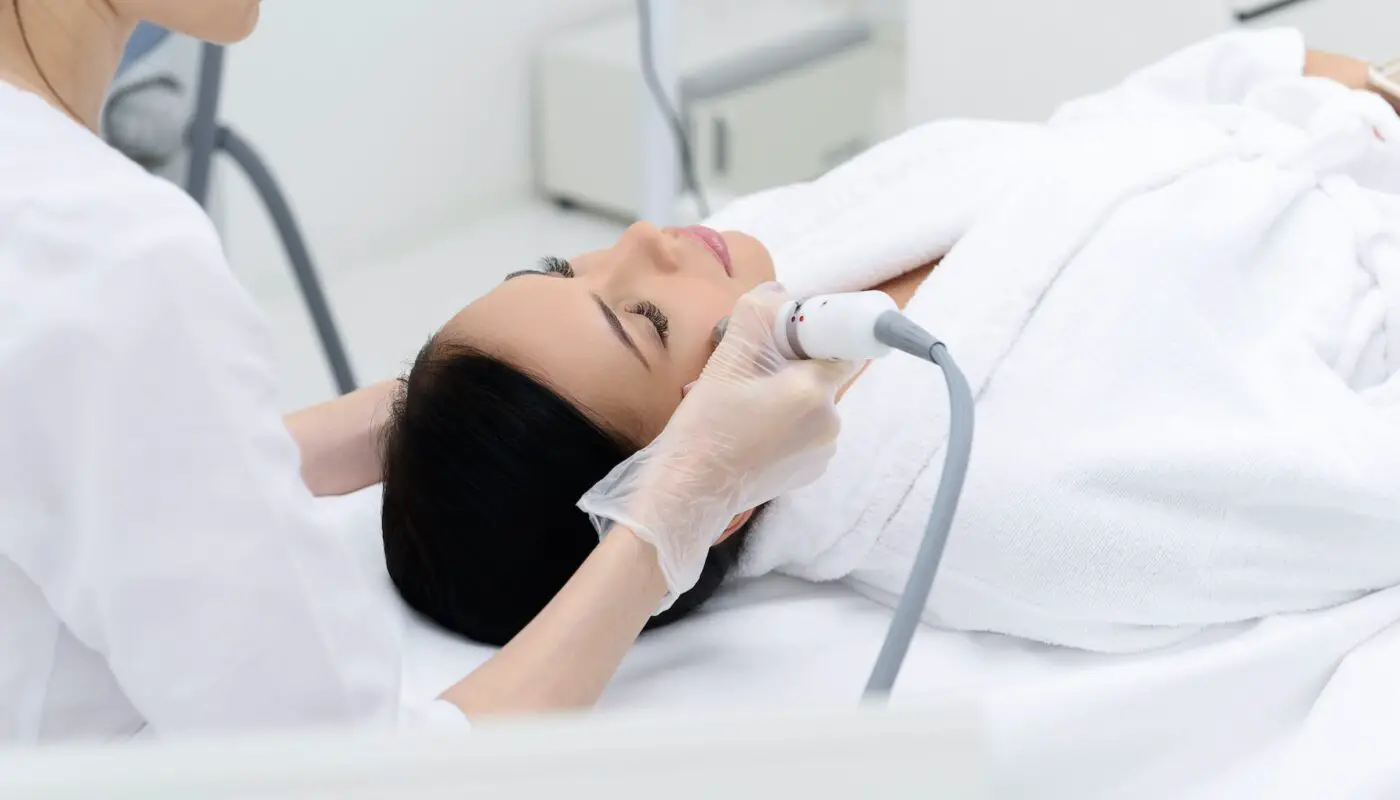Birthmarks are discolorations on the skin, usually present at birth or soon after. While many people embrace their birthmarks, others may feel self-conscious about them and desire their removal.
Birthmark removal is a cosmetic procedure that can help improve the skin’s appearance, boosting confidence and self-esteem. This article will explore the different types of birthmarks, the available birthmark removal options, and what to expect during and after the procedure.

Types of Birthmarks
There are two main types of birthmarks: pigmented and vascular.
Pigmented birthmarks are caused by an overproduction of melanin, the pigment that gives color to the skin, hair, and eyes. Examples of pigmented birthmarks include café-au-lait spots, moles, and Mongolian spots.
On the other hand, vascular birthmarks are caused by an abnormal growth of blood vessels in the skin. Examples of vascular birthmarks include port-wine stains, hemangiomas, and salmon patches.
Birthmark Removal Options
The type of birthmark and its location on the body will determine the best removal method. Here are some of the most common options:
- Laser Therapy: Laser therapy is a non-invasive procedure that uses intense light energy to remove the birthmark. The laser heats up and destroys the pigment or blood vessels in the birthmark, causing it to fade over time. Multiple sessions may be required to achieve the desired results, and some discomfort and redness may occur following the procedure.
- Surgical Excision: Surgical excision involves cutting out the birthmark and stitching up the wound. This option is usually reserved for smaller birthmarks that are not located on sensitive areas of the body. Surgical excision may leave a scar, but it can provide immediate results.
- Cryotherapy: Cryotherapy involves freezing the birthmark with liquid nitrogen. The extreme cold destroys the cells in the birthmark, causing it to slough off. This method is most effective for smaller, superficial birthmarks and may require several treatments.
- Topical Creams: Some topical creams, such as those containing hydroquinone, can be used to lighten pigmented birthmarks over time. However, topical creams are usually less effective than other removal options and may take several months or even years to produce noticeable results.
What to Expect During and After Birthmark Removal

The specifics of the birthmark removal process will depend on the type and location of the birthmark, as well as the chosen removal method. In general, however, patients can expect the following:
- Consultation: Before undergoing birthmark removal, patients will consult a dermatologist or plastic surgeon. During this appointment, the doctor will assess the birthmark, discuss the available removal options, and determine the best course of action based on the patient’s goals and medical history.
- Procedure: The procedure itself will vary depending on the chosen removal method. Laser therapy and cryotherapy are generally non-invasive and require little to no downtime. Surgical excision, on the other hand, will require local anesthesia and may cause some discomfort and swelling.
- Recovery: Recovery time will depend on the type of birthmark removal procedure. Patients undergoing laser therapy or cryotherapy can return to their regular activities immediately following the procedure. Those who undergo surgical excision may need to take a few days off work and avoid strenuous activity for several weeks. It’s essential to follow the doctor’s post-procedure instructions carefully to promote healing and reduce the risk of complications.
- Results: The results of birthmark removal will vary depending on the type and location of the birthmark and the chosen removal method. Depending on the technique of birthmark removal, you may need multiple treatments to achieve the desired results.
FAQs on Birthmarks
What are the main types of birthmarks?
There are two main types of birthmarks: pigmented and vascular.
Pigmented Birthmarks: These birthmarks are caused by an overproduction of melanin, the pigment that gives color to the skin, hair, and eyes. Examples of pigmented birthmarks include:
Café-au-lait spots: Light brown, flat patches on the skin, usually oval in shape.
Moles (also known as nevi): Small, dark brown spots or raised growths on the skin.
Mongolian spots: Bluish-gray, flat skin discolorations, commonly found on the lower back or buttocks.
Vascular Birthmarks: These birthmarks are caused by an abnormal growth of blood vessels in the skin. Examples of vascular birthmarks include:
Port-wine stains: Red or purple skin discolorations that may darken and thicken over time, often found on the face, neck, or limbs.
Hemangiomas: Raised, red, or bluish birthmarks that may proliferate during the first few months of life before slowly fading. They can appear on the skin’s surface (superficial) or deeper within the skin (deep).
Salmon patches (also known as stork bites or angel kisses): Flat, pink or red marks usually found on the back of the neck, forehead, eyelids, or upper lip.
Each type of birthmark has different characteristics and may require a specific approach for removal or treatment. Consult with a dermatologist or plastic surgeon to determine the best course of action for your particular birthmark.
What are the most common birthmark removal options?
The most common birthmark removal options include:
Laser Therapy: This non-invasive procedure uses intense light energy to target and remove the birthmark. The laser heats up and destroys the pigment or blood vessels in the birthmark, causing it to fade over time. Multiple sessions may be required to achieve the desired results, and some discomfort and redness may occur following the procedure.
Surgical Excision: This method involves cutting out the birthmark and stitching up the wound. Surgical excision is usually reserved for smaller birthmarks that are not located on sensitive areas of the body. While it can provide immediate results, this option may leave a scar.
Cryotherapy: Cryotherapy involves freezing the birthmark with liquid nitrogen. The extreme cold destroys the cells in the birthmark, causing it to slough off. This method is most effective for smaller, superficial birthmarks and may require several treatments.
Topical Creams: Some topical creams, such as those containing hydroquinone, can be used to lighten pigmented birthmarks over time. However, topical creams are generally less effective than other removal options and may take several months or even years to produce noticeable results.
The best method for removing a birthmark depends on factors such as its type, size, location, and depth. A dermatologist or plastic surgeon can help determine the most appropriate removal option for your specific birthmark.
What can I expect during and after a birthmark removal procedure?
During and after a birthmark removal procedure, you can expect the following:
Consultation: Before the procedure, you will consult a dermatologist or plastic surgeon. They will assess your birthmark, discuss removal options, and determine the best course of action based on your goals and medical history.
Procedure: The procedure itself will vary depending on the chosen removal method. Laser therapy and cryotherapy are generally non-invasive and require little to no downtime. Surgical excision will require local anesthesia and may cause some discomfort and swelling.
Recovery: Recovery time depends on the type of birthmark removal procedure. Patients undergoing laser therapy or cryotherapy can return to their regular activities immediately following the procedure. Those who undergo surgical excision may need to take a few days off work and avoid strenuous activity for several weeks. It’s essential to follow your doctor’s post-procedure instructions carefully to promote healing and reduce the risk of complications.
Results: The results of birthmark removal will vary depending on the type and location of the birthmark and the chosen removal method. Depending on the technique of birthmark removal, you may need multiple treatments to achieve the desired results.
Remember that individual experiences may vary, and it’s crucial to thoroughly discuss with your healthcare professional to understand what to expect during and after your specific birthmark removal procedure.
Final Thought on Birthmark Removal
Whether you choose laser therapy, cryotherapy, or another method, modern birthmark removal offers life-changing possibilities for those seeking to enhance their self-confidence. Consult a dermatologist or plastic surgeon to determine the best approach for your unique birthmark, and embrace the opportunity to unveil your flawless skin.



